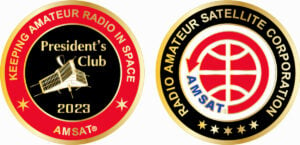In this edition:
- Bob Twiggs Keynote Address at 2024 AMSAT Space Symposium Now Available
- Updated Hamfest Handouts Now Online
- UK’s SaxaVord Spaceport to Launch Amateur Radio Satellites
- AO-73 Goes on Hiatus
- Bochum Space Conference 2024
- Changes to AMSAT-NA TLE Distribution for February 23, 2024
- ARISS News
- Upcoming Satellite Operations
- Hamfests, Conventions, Maker Faires, and Other Events
- Satellite Shorts From All Over
The AMSAT News Service bulletins are a free, weekly news and information service of AMSAT, the Radio Amateur Satellite Corporation. ANS publishes news related to Amateur Radio in Space including reports on the activities of a worldwide group of Amateur Radio operators who share an active interest in designing, building, launching and communicating through analog and digital Amateur Radio satellites.
The news feed on http://www.amsat.org publishes news of Amateur Radio in Space as soon as our volunteers can post it.
Please send any amateur satellite news or reports to: ans-editor [at] amsat [dot] org.
You can sign up for free e-mail delivery of the AMSAT News Service Bulletins via the ANS List; to join this list see: https://mailman.amsat.org/postorius/lists/ans.amsat.org/
ANS-056 AMSAT News Service Weekly Bulletins
To: All RADIO AMATEURS
From: Radio Amateur Satellite Corporation
712 H Street NE, Suite 1653
Washington, DC 20002
DATE 2024 FEB 25
Bob Twiggs Keynote Address at 2024 AMSAT Space Symposium Now Available
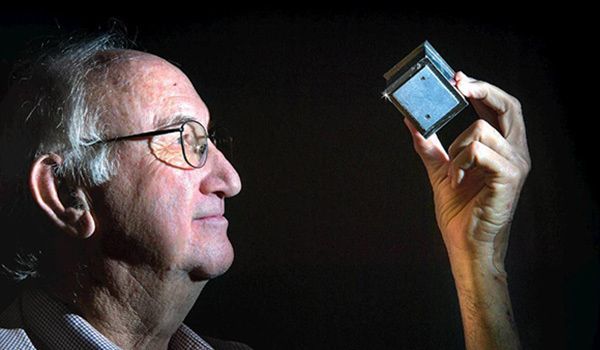
For those who missed Bob Twiggs, KE6QMD, keynote address at the 2023 AMSAT Space Symposium, now is your chance to catch up on this delightful and informative presentation. You can view Bob’s 36-minute presentation at https://youtu.be/uDPJ4SHAF74?si=c9f3xM8G1KFUjZPw. Sorry, there are no advanced mathematical formulas or complex orbital mechanics to be found here. Bob is a consummate story teller who brings warmth and humanity to the pioneering days of amateur satellites. If you weren’t in Dallas for the live event, this is the next best thing to being there.
Robert J. Twiggs is a professor of Astronautics and Space Science at Morehead State University. He is responsible, along with Jordi Puig-Suari of California Polytechnic State University, for co-inventing the CubeSat reference design for miniaturized satellites which became an Industry Standard for design and deployment of the satellites.
Twiggs earned a Bachelor of Science in Electrical and Electronics Engineering from the University of Idaho in 1961 and a Master of Science in Electrical Engineering with a concentration in microwave devices from Stanford University in 1964.
From 1985 to 1994, Twiggs was the director of the Weber State University Center for Aerospace Technology. He served as a consulting professor in the Stanford University Department of Aeronautics and Astronautics from 1994 to 2008. At Stanford, he established the Space Systems Development Laboratory. Bob Twiggs became a professor at Morehead State University in 2009 in an effort to push the PocketQube standard leveraging the university’s large aperture space tracking system, and to help develop a space economy in the state of Kentucky.
In 2019, Twiggs designed and proposed another smaller, simpler satellite form factor called ThinSat which could enable high school students to design and build satellites.
[ANS thanks AMSAT and Wikipedia for the above information and David Beaujean, N8EPF, for his excellent work in editing the video presentation for our enjoyment.]
Updated Hamfest Handouts Now Online
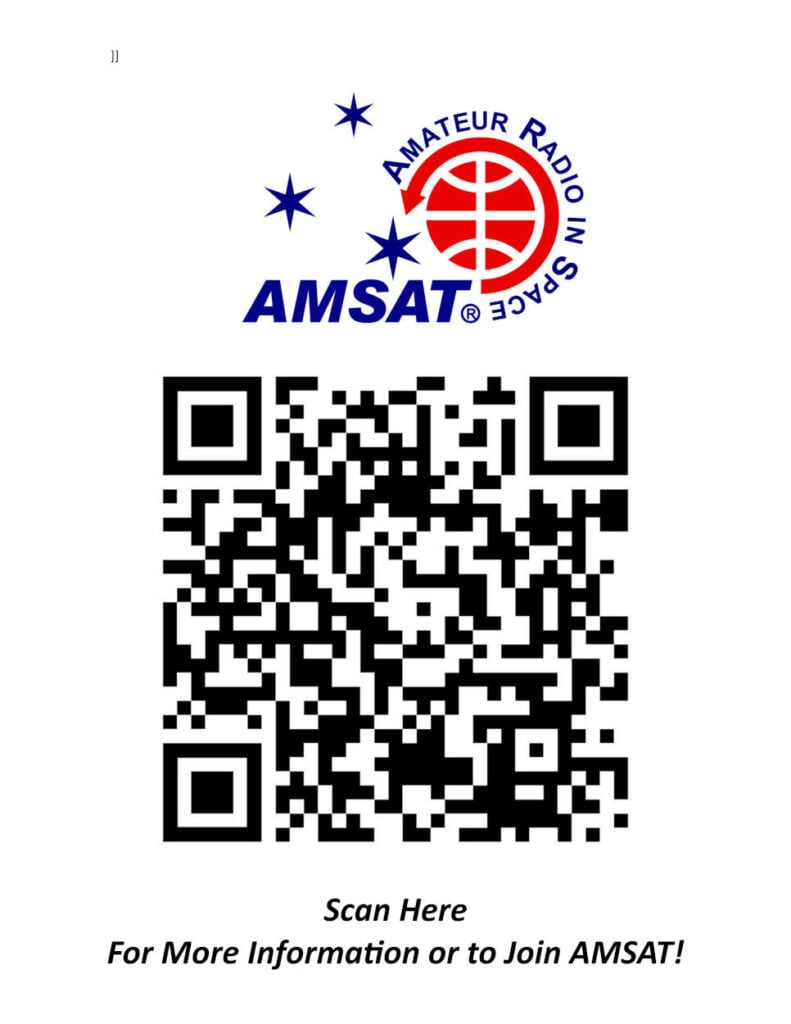
Realizing that the hamfest season runs from January 1st through December 31st every year, AMSAT needed to update its venerable tri-fold handout. While AMSAT finalizes its plans for reinvigorating its Ambassador program, it wanted to make immediately available a fresh set of handouts for use at hamfests, maker-faires, and so on.
Some of the considerations to be factored into an updated program are the increased costs of printing and shipping small quantities of handouts here and there. Conversely, the cost of printing and shipping literature has to be balanced against the inevitable “waste” factor of literature simply tossed into, at best, a nearby recycling bin by passer-by’s who feel obligated to take a handout offered to them as they walk by a display. Considerable thought is being give to this situation.
For a few recent hamfests, a few AMSAT Ambassadors have been testing the concept of displaying a poster with a QR code that interested parties can scan to download literature. Although it is too soon to say this approach is a smashing success, AMSAT Ambassadors testing the concept feel positive about the reaction of hamfest participants visiting their displays. In tests, a QR code on a small poster can be successfully decoded at up to 20 feet away.
You can view or download the QR code poster at AMSAT Hamfest QR Code.
The QR code used brings the ham to a “landing” site of the AMSAT website. The landing site offers the person
- A link to join AMSAT online,
- A two-page summary brochure as to why they should join AMSAT,
- A comprehensive brochure describing AMSAT activities, and
- A link to the AMSAT Store to buy a downloadable copy of “Getting Started with Amateur Satellites.”
You can view the landing page at https://www.amsat.org/getting-started-with-amsat/. This page has been specially formatted for use on smart phones. You can click on each of the images to view or download each of the documents or links. Since this is a test period for this approach, these pages are not cataloged on the web site. After we receive feedback from AMSAT membership and especially AMSAT Ambassadors, access to these documents and the QR code poster will be open to general membership.
The AMSAT Ambassador team looks forward to your feedback on how to improve AMSAT’s presence at local and regional hamfests, maker-faires and other events that can boost interest in amateur satellites and AMSAT membership. Please send your comments and/or questions to [email protected]. If you are interested in becoming an AMSAT Ambassador, please send an email with a short resume to [email protected].
[ANS thanks AMSAT for the above information.]
UK’s SaxaVord Spaceport to Launch Amateur Radio Satellites
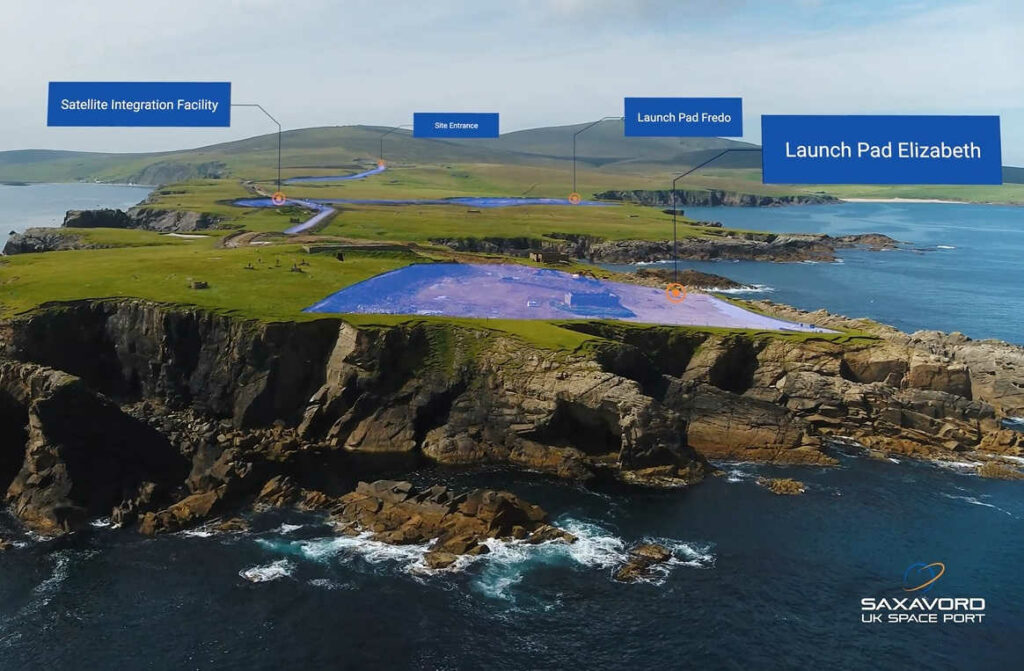
Two more amateur radio satellites, MARIA-G (HADES-F) and UNNE-1 (HADES-E), are planned to launch from the UK’s SaxaVord Spaceport later in 2024. Previously announced amateur radio payloads on the launch are:
ERMINAZ-1U and -1V from AMSAT-DL
GENESIS-MA and -ME from AMSAT-EA
QUBIK 5, SIDLOC-PQ-1 and -PQ-2 from Libre Space Foundation
MARIA-G
A 1.5u Pocketqube. MARIA-G will offer radio amateurs around the world the opportunity to relay FM voice and AX.25 / APRS 300 / 1200 bps communications. The satellite will also transmit telemetry with its status and voice and CW messages. This all will be achieved by implementing a SDR based FM and FSK repeater. The FM / FSK repeater will be available all time and opened by squelch level without the need of a PL tone/CTCSS.
Main mission for MARIA-G is to be a FM repeater but it will also include a simple guess game being implemented by students at Maria Guerrero High School in Collado Villalba – Madrid (Spain). The satellite will send a clue each week in CW so radio amateurs will have to solve the mystery by having all the clues.
A small experiment, developed by Fraunhofer-Gesellschaft research organization (Germany) will also fly on the satellite to make proof of concept transmissions of a TS-UNB waveform from a low Earth orbit. It will transmit a TS-UNB message according to the ETSI standard ETSI-TS-103-357. It is intended solely as a research and development project with no commercial intent, all its data public and open. ITU modulation classification would be 100K W2DWW but the bandwidth will be narrowed. The operation of this experiment will be managed by AMSAT-EA.
UNNE-1
A 1.5u Pocketqube. UNNE-1 will offer radio amateurs around the world the opportunity to relay FM voice and AX.25 / APRS 300 / 1200 bps communications. The satellite will also transmit telemetry with its status and voice and CW messages.
This all will be achieved by implementing a SDR based FM and FSK repeater. The FM / FSK repeater will be available all time and opened by squelch level without the need of a PL tone/CTCSS.
A small guessing-game is being implemented by students of Universidad de Nebrija (Spain). The satellite will send a clue each week in its telemetry so radio-amateurs will have to solve the mystery by having all the clues. Game will be detailed in AMSAT-EA and Universidad de Nebrija websites.
The main mission for the satellite is acting as a FM voice repeater although due to its SDR nature it can repeat data too. This satellite is based on the hardware of HADES-D (SO-121) that’s currently being used to amateurs worldwide. The guess game implemented by the University is a small challenge for the radio-amateurs and its mission is to make the reception of signals from the satellite fun for youngsters, expecting them to be future radio amateurs.
Proposing a UHF downlink, VHF Uplink for FM voice, FSK data up to 1200 bps, APRS up to 1200 bps and FSK telemetry and experimental data up to 1600 bps and CW.
These two satellites are part of the Erminaz mission, a joint effort by AMSAT-DL, AMSAT-EA and Libre Space Foundation. Planning a DLR/ESA launch from the UK SaxaVord Spaceport in Summer 2024 into 500/600 km polar orbit.
For more information see:
IARU satellite frequency coordination pages https://iaru.amsat-uk.org/index.php
AMSAT-DL ERMINAZ https://amsat-dl.org/en/erminaz/
AMSAT-EA projects https://www.amsat-ea.org/proyectos/
Libre Space Foundation projects https://libre.space/projects/
[ANS thanks AMSAT-UK for the above information.]
The 2024 AMSAT President’s Club coins are here now!
Help Support GOLF and Fox Plus
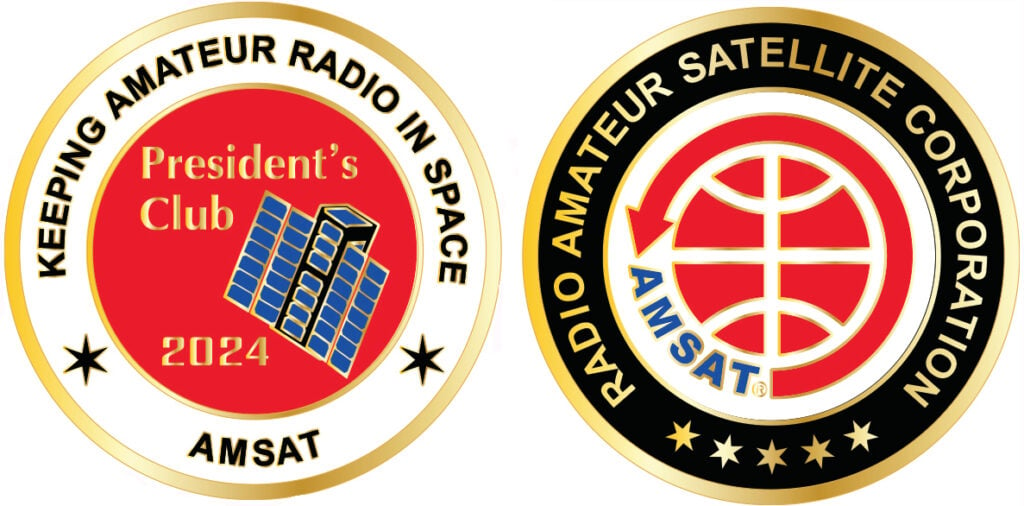
Join the AMSAT President’s Club today and help
Keep Amateur Radio in Space!
https://www.amsat.org/join-the-amsat-presidents-club/
AO-73 Goes on Hiatus
A messages from the FC1 operations team reads,
“After a good period of transponder activity FUNcube batteries need a short rest. We plan to switch the transponder OFF between March 3rd to 15th subject to operational conditions. The satellite will be placed Safe mode and will still provide low power telemetry
[ANS thanks David Johnson, G4DPZ for the above information.]
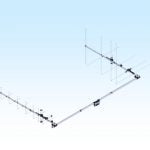
Need new satellite antennas? Purchase Arrows, Alaskan Arrows,
and M2 LEO-Packs from the AMSAT Store. When you purchase through
AMSAT, a portion of the proceeds goes towards
Keeping Amateur Radio in Space.
https://amsat.org/product-category/hardware/
Bochum Space Conference 2024
From September 20-22, 2024, AMSAT-DL is organizing a symposium, flea market and general meeting in the radome of the Bochum Observatory. The radome will once again be dedicated to satellite and space research.
AMSAT Deutschland e.V. and the Bochum Observatory are taking the positive experience of the anniversary conference in 2023 as an opportunity to inform AMSAT members and other space enthusiasts about current and future prospects for national and international space projects with a varied program. As the radome is also the location of ESA’s education office in Germany (esero Germany), they want to make the symposium even more attractive in future and at the same time focus even more on current European space travel.
The planning so far envisages the following schedule:
Friday, September 20, 2024
Come-together in the afternoon including short guided tours in the radome.
Saturday, September 21, 2024
From 9:00 a.m. AMSAT symposium with lecture program. Amateur radio flea market in the radome.
Sunday, September 22, 2024
From 10:00 a.m. General meeting
Further information on the AMSAT-DL space conference in Bochum will follow in the course of 2024. The conference program is expected to be available on our website beginning in July. Speakers with interesting topics wanted, please get in touch!
For further information see https://amsat-dl.org/en/bochum-space-conference-2024/
[ANS thanks AMSAT-DL for the above information.]
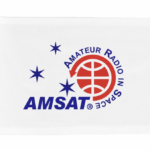
Want to fly the colors on your own grid expedition?
Get your AMSAT car flag and other neat stuff
from our Zazzle store!
25% of the purchase price of each product goes
towards Keeping Amateur Radio in Space
https://www.zazzle.com/amsat_gear
Changes to AMSAT-NA TLE Distribution for February 23, 2024
Two Line Elements or TLEs, often referred to as Keplerian elements or keps in the amateur community, are the inputs to the SGP4 standard mathematical model of spacecraft orbits used by most amateur tracking programs. Weekly updates are completely adequate for most amateur satellites. Elements in the TLE bulletin files are updated daily. TLE bulletin files are updated to add or remove satellites as necessary Thursday evenings around 2300 UTC, or more frequently if new high interest satellites are launched. More information may be found at https://www.amsat.org/keplerian-elements-resources/
The following satellites have been removed from this week’s AMSAT-NA TLE distribution:
CAPE-3 NORAD Cat ID 47309 Decayed from orbit on or about 17 February 2024
GRIFEX NORAD Cat ID 40379 Decayed from orbit on or about 22 February 2024
[ANS thanks Joe Fitzgerald, KM1P, AMSAT Orbital Elements Manager for the above information.]
ARISS NEWS
Amateurs and others around the world may listen in on contacts between amateurs operating in schools and allowing students to interact with astronauts and cosmonauts aboard the International Space Station. The downlink frequency on which to listen is 145.800 MHz worldwide.
Completed Contacts
Girl Scout Troop 1089, Sacramento, CA, direct via N6NA.
The ISS callsign was NA1SS.
The crewmember was Loral O’Hara, KI5TOM.
The ARISS mentor is AA4KN.
Contact was successful on Thursday February 22, 2024.
The crossband repeater continues to be active (145.990 MHz up {PL 67} & 437.800 MHz down). If any crewmember is so inclined, all they have to do is pick up the microphone, raise the volume up, and talk on the crossband repeater. So give a listen, you just never know.
The packet system is reported to be active on the ARISS status page (145.825 MHz up & down) but the AMSAT satellite status page shows no recent contacts as of the time of this writing.
As always, if there is an EVA, a docking, or an undocking; the ARISS radios are turned off as part of the safety protocol.
Note, all times are approximate. It is recommended that you do your own orbital prediction or start listening about 10 minutes before the listed time.
The latest information on the operation mode can be found at https://www.ariss.org/current-status-of-iss-stations.html
The latest list of frequencies in use can be found at https://www.ariss.org/contact-the-iss.html
[ANS thanks Charlie Sufana, AJ9N, one of the ARISS operation team mentors for the above information.]
Upcoming Satellite Operations
No operations listed at this time.
[ANS thanks Ian Parsons, K5ZM, AMSAT Rover Page Manager, for the above information.]
Hamfests, Conventions, Maker Faires, and Other Events
AMSAT Ambassadors provide presentations, demonstrate communicating through amateur satellites, and host information tables at club meetings, hamfests, conventions, maker faires, and other events.
CubeSat Developers Workshop 2024
April 23–25, 2024
Cal Poly, San Luis Obispo
https://www.cubesatdw.org/
Dayton Hamvention 2024
May 17, 2024 – May 19, 2024
Greene County Fairgrounds and Expo Center
120 Fairground Road, Xenia, OH 45385
https://hamvention.org
38th Annual Small Satellite Conference
Logan, UT, USA
August 3-8, 2024
https://smallsat.org/
Satellite Shorts From All Over
+ The European Space Agency Academy’s CubeSat Summer School is open for applications. Taking place over four weeks from 5 to 30 August 2024 at ESEC-Galaxia (Transinne, Belgium), applications are now open for university students with engineering, physics and business management backgrounds. During the Summer School, ESA and external experts will deliver an extensive mix of lectures and hands-on activities. The entire project lifecycle of a satellite mission will be covered, from design to verification, launch and operations, including typical milestone reviews and new methodologies. Students will be introduced to legal, cybersecurity, and economic aspects of space projects. The Summer School will even introduce space entrepreneurship skills, offering support in devising methods of turning a CubeSat into a viable and profitable business opportunity. More information at http://tinyurl.com/ANS-056-ESA-Summer-School. [ANS thanks the European Space Agency for the above information.]
+ NASA is developing a plan to deorbit the International Space Station (ISS) at the end of its lifetime, currently scheduled for 2030. Since the 356-foot-wide laboratory is too big to completely vaporize if left to naturally burn in Earth’s atmosphere, the space agency intends to send a US spacecraft to help deorbit the station and direct its reentry over the unpopulated South Pacific. The goal is to give the ISS an extra “space tug” to help it move more than it could with its own thrust, and guide the final burns for ISS to re-enter Earth’s atmosphere. The space tug is expected to cost $1 billion, agency officials had said earlier this year. Earlier this year, Russia agreed to stay onboard ISS through 2028, rather than its previous timeline of 2024, after which it may focus on building its own station in low-Earth orbit. Other partner countries have agreed to continue their presence through 2030, but it is not clear precisely how they will contribute to retiring the ISS. More information at http://tinyurl.com/ANS-056-ISS-Tug. [ANS thanks the SpaceRef.com for the above information.]
+ Martians Wanted: NASA has opened the call for a simulated yearlong Mars mission. If you’re looking for an extended vacation next year, NASA is seeking applicants to participate in its next simulated one-year Mars surface mission to help inform the agency’s plans for human exploration of the Red Planet. The second of three planned ground-based missions called CHAPEA (Crew Health and Performance Exploration Analog) is scheduled to kick off in spring 2025. Each CHAPEA mission involves a four-person volunteer crew living and working inside a 1,700-square-foot, 3D-printed habitat based at NASA’s Johnson Space Center in Houston. The habitat, called the Mars Dune Alpha, simulates the challenges of a mission on Mars, including resource limitations, equipment failures, communication delays, and other environmental stressors. Crew tasks include simulated spacewalks, robotic operations, habitat maintenance, exercise, and crop growth. More information at: http://tinyurl.com/ANS-056-Mars-Mission. [ANS thanks the NASA for the above information.]
Join AMSAT today at https://launch.amsat.org/
In addition to regular membership, AMSAT offers membership to:
- Societies (a recognized group, clubs or organization).
- Primary and secondary school students are eligible for membership at one-half the standard yearly rate.
- Post-secondary school students enrolled in at least half time status shall be eligible for the student rate for a maximum of 6 post-secondary years in this status.
- Memberships are available for annual and lifetime terms.
Contact info [at] amsat.org for additional membership information.
73 and remember to help Keep Amateur Radio in Space!
This week’s ANS Editor, Frank Karnauskas, N1UW
n1uw [at] amsat [dot] org

